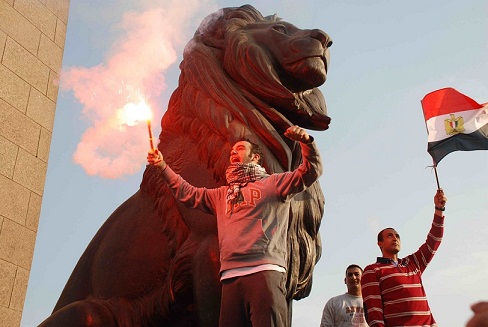In cooperation with the British Museum, a team of Egyptian Museum in Tahrir square began restoring an ancient Egyptian mural from tomb No. 100 that was discovered in Kom Al-Ahmar, Qena governorate, which is one of the oldest known tombs in Egypt with coloured drawings.
Sabah Abdel Razek, Director of the Egyptian Museum in Tahrir, said that the mural restoration project, is part of the first phase of the museum development, and is funded by the European Union in cooperation with the five major European Museums Alliance: British Museum, Egyptian Museum in Turin, Berlin Museum, The Louvre, Leiden Museum in the Netherlands.
She indicated that the mural dates back 6000 years, and it was transferred from the tomb to the Egyptian Museum in Tahrir in 1898 and was reconstructed in the early 20th Century.
The ancient Egyptian mural depicts a procession of boats and one of them has shades over a person, possibly the man buried in the tomb. In the lower left corner, a man appears in control of three bound prisoners. Studies indicate that the deceased (the owner of the tomb) was either a ruler or a member of the elite at the time.
Abdel-Rahman Medhat, a restoration specialist at the Egyptian Museum, said that the mural was examined before starting the restoration project, documented and evaluated through ultraviolet and infrared imaging..
The examination showed that the mural is structurally stable, but suffers from some signs of damage in the form of cracks and missing parts. In addition to that, the colors that were used consist of yellow ocher, red ocher, and carbon black, and that the main component of it is clay.
He added that the restoration work done so far included reinforcing the entire front surface of the mural, injecting the weak parts with reinforcement materials. Gradual work is done to remove the existing wooden panels and replace them with an alternate holder made of honeycomb.




